I have been prompted by some of the comments received on my recent One Shot Story to pull up an article about the camera I used and some of my results from it. I had put it aside to edit it down considerably but done nothing about it for many years. Hopefully this will be a bit more readable.
After almost ten years of hybrid and digital only photography, the attractions started to wane around 2005 or so. After several smaller pinhole efforts I decided to make a panoramic camera for 6×12 format on 120 roll film. This was originally intended to be a pinhole but as I was developing it I bought a Miniature Speed Graphic its body turning out to be a dud with no innards. The Kodak Ektar 101mm lens/shutter unit was in good condition so my 6×12 was adapted to take both a pinhole and the Ektar. The movements the MSG provided gave me the needed coverage.
These wide formats have long appealed to landscape photographers. Wide format backs are still produced for large format cameras, usually using roll film. Hasselblad notably produced its Xpan camera in 1998 for 35mm film and there are also several roll film models which will accept large format lenses made by various manufacturers and specialist builders.
These days digital technology can replicate these formats but to me there is still a quality about images made on film that sets them apart from the digitally captured equivalent.
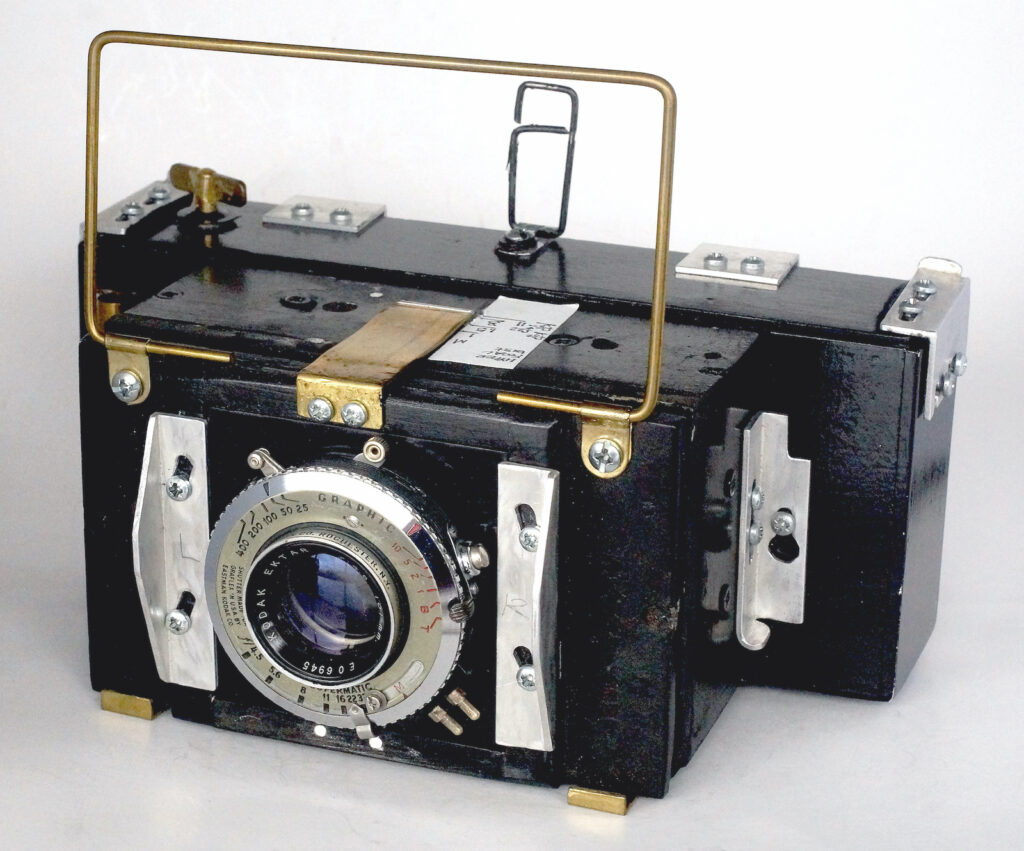
My Camera
I decided to build a simple 120 camera giving 6 exposures on 120 film, 56mm x 115mm roughly. I placed the red window to position the first two frames at no.1 on the backing paper, then only using the odd numbers when winding on.
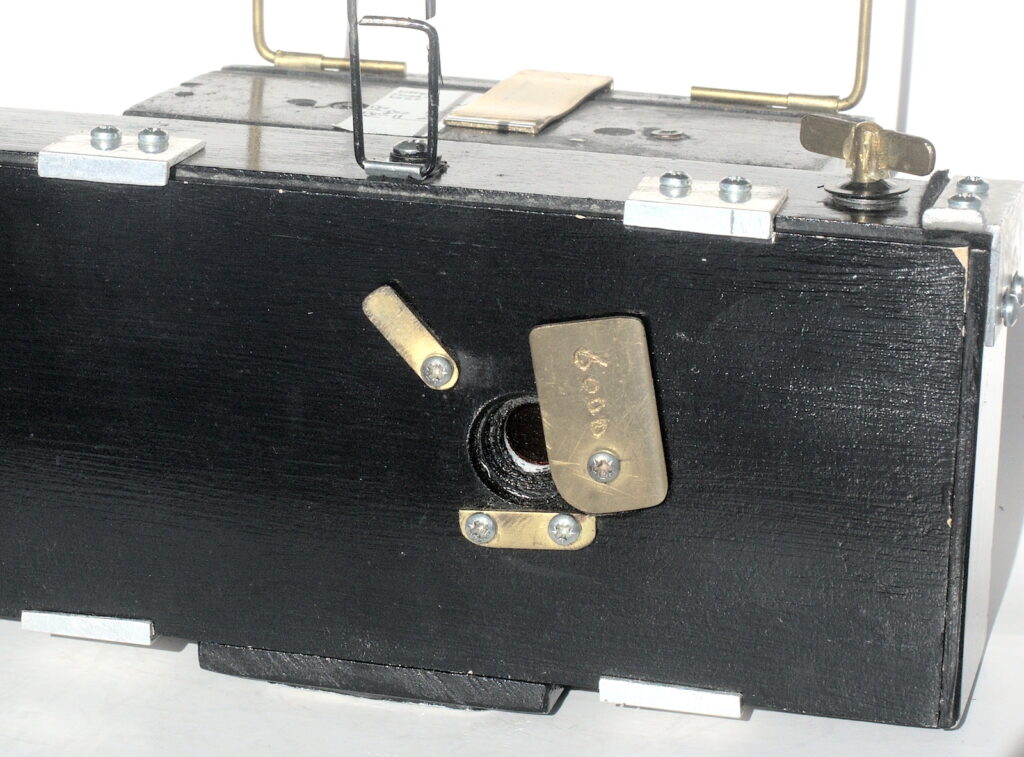
The camera was made from 6mm MDF board and metal parts were fabricated from aluminium angle and brass sheet and sections. The tripod mount was made with a 1/4” nut embedded in the MDF with epoxy adhesive and with an aluminium plate fixed over it for security and durability.
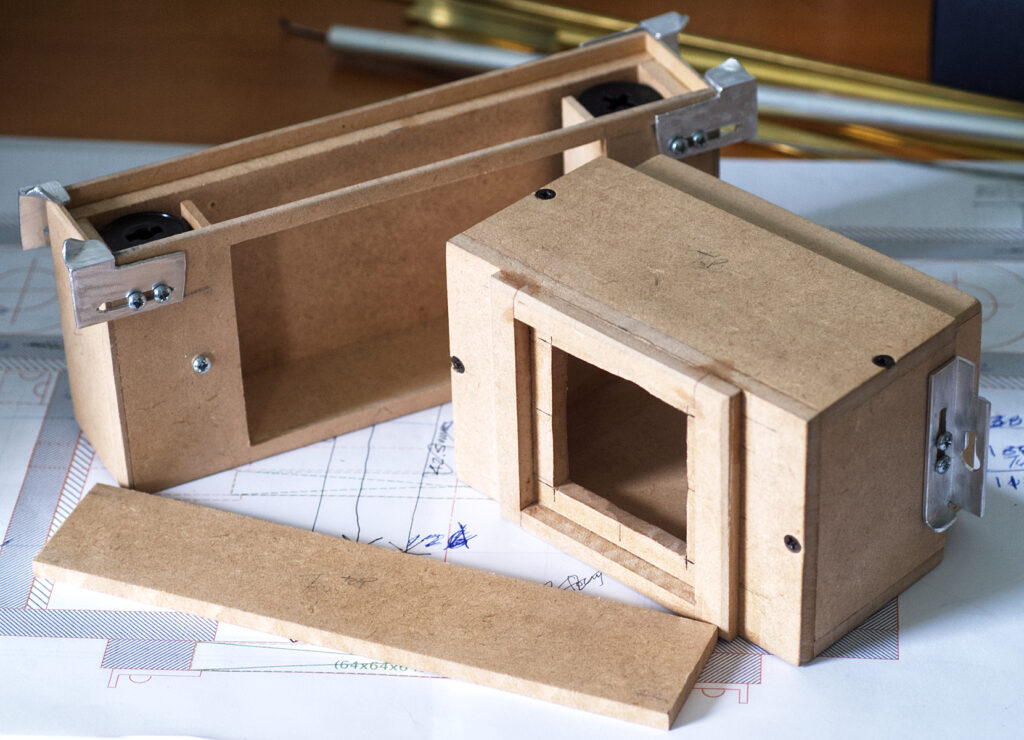
Construction was greatly helped by having the basic component MDF blanks cut for me by a cabinet maker who produced them very accurately indeed. Since I had initially planned to use it for pinhole I made the body and the back separable so that I could vary the focal length by having several bodies of different depths. The additional ones, as it turned out, were not to appear as was the 6×6 back I was considering, hence the original finder frame.
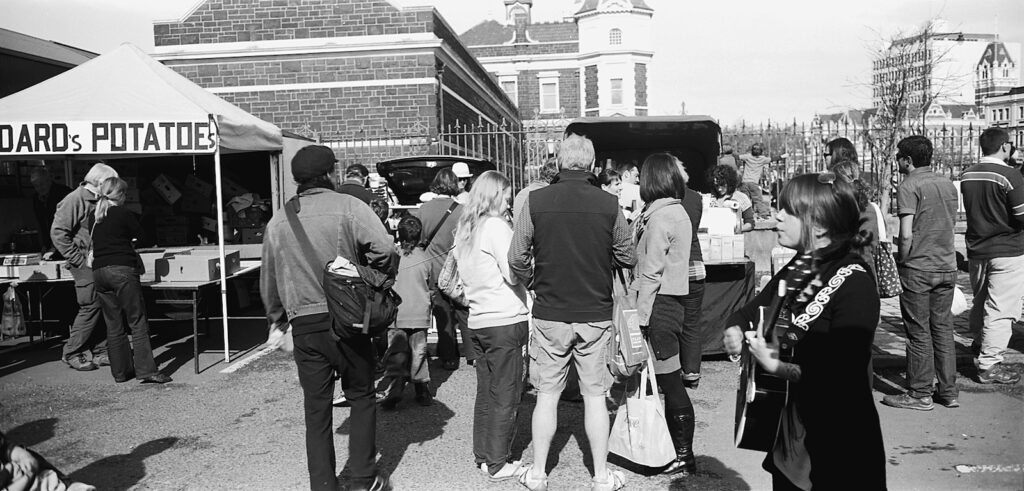
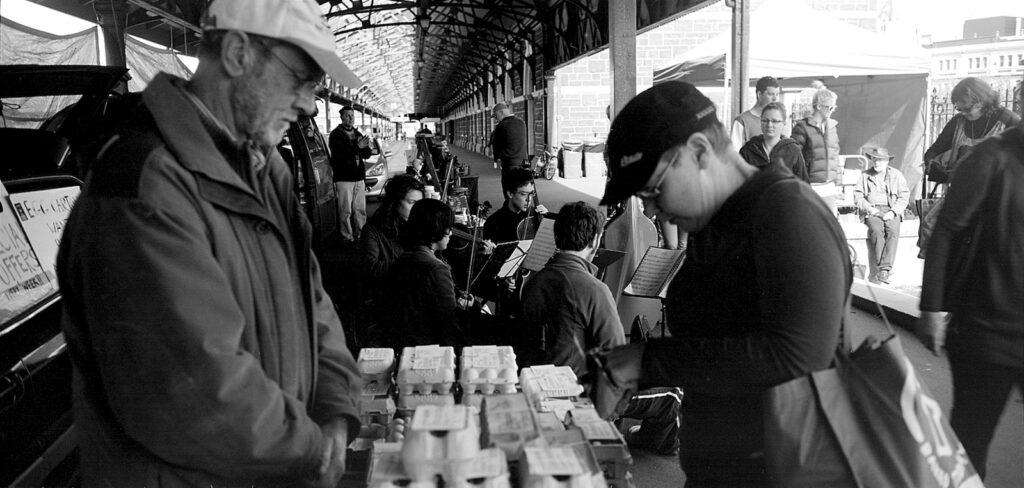
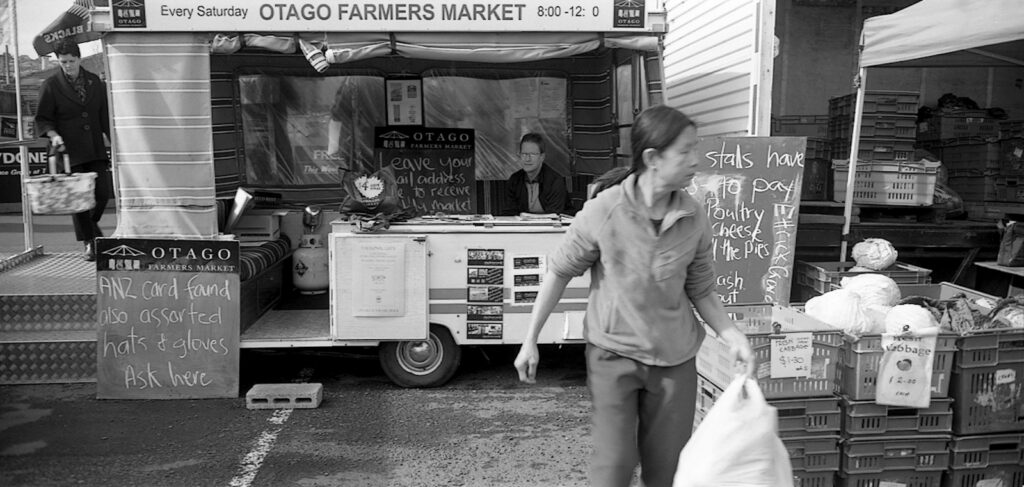
With the lens fitted, the camera produced best focus at f32 unless the subject was roughly 3 metres away when larger apertures could be used. Three metres is the approximate hyperfocal distance at f32 meaning most work had to be done on a tripod though I tried some hand-held shots at the local Farmers’ Market at f8 I think (f8 and be there?). My efforts greatly amused a visitor from Japan who apparently put a photo of me on his web page.
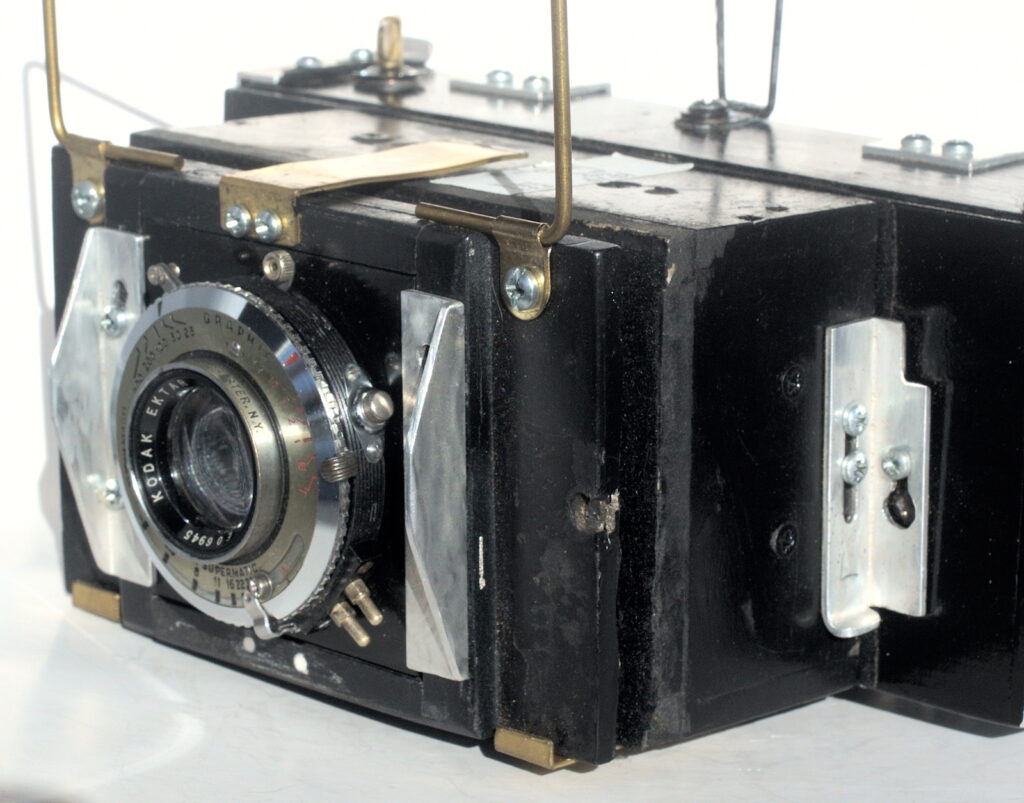
I have fitted a very crude, sliding box focus arrangement recently which gives a little more flexibility but overall I prefer the tripod mounted results. I can see why the f64 Group took the stand they did in the 1930s. Focus stacking these days gives the same extreme depth of field through multiple exposures and software, but the longer focal lengths and the character of film can give the results that extra something that digital lacks.
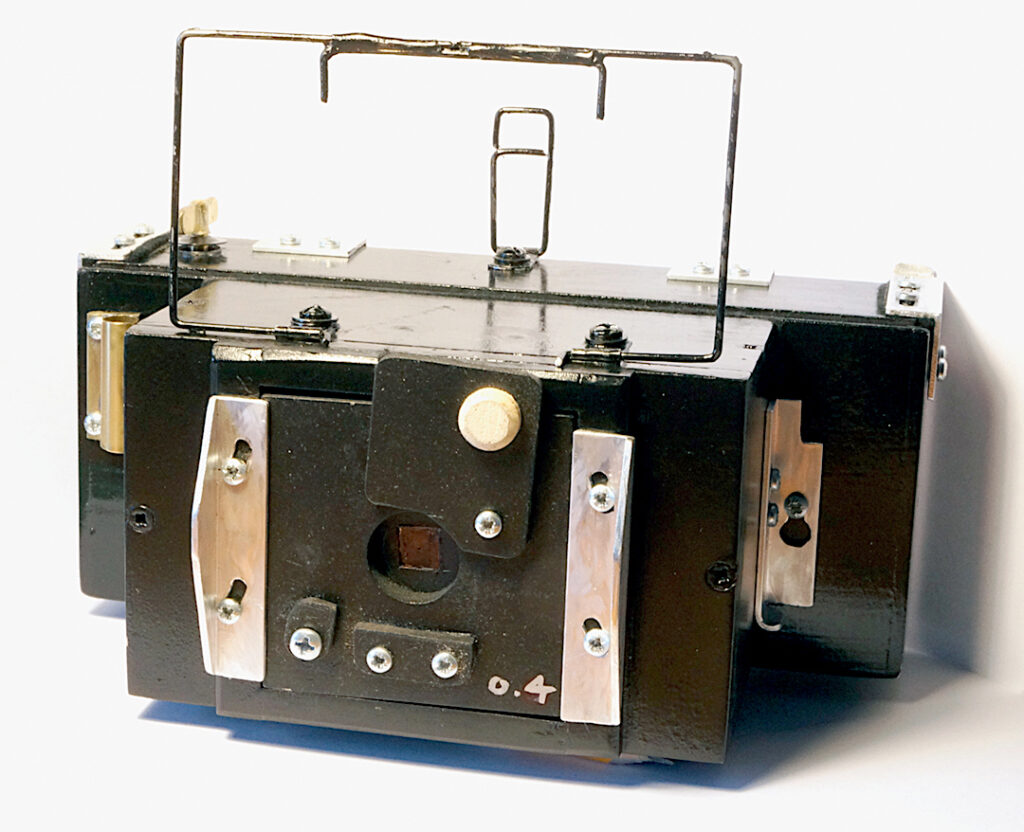
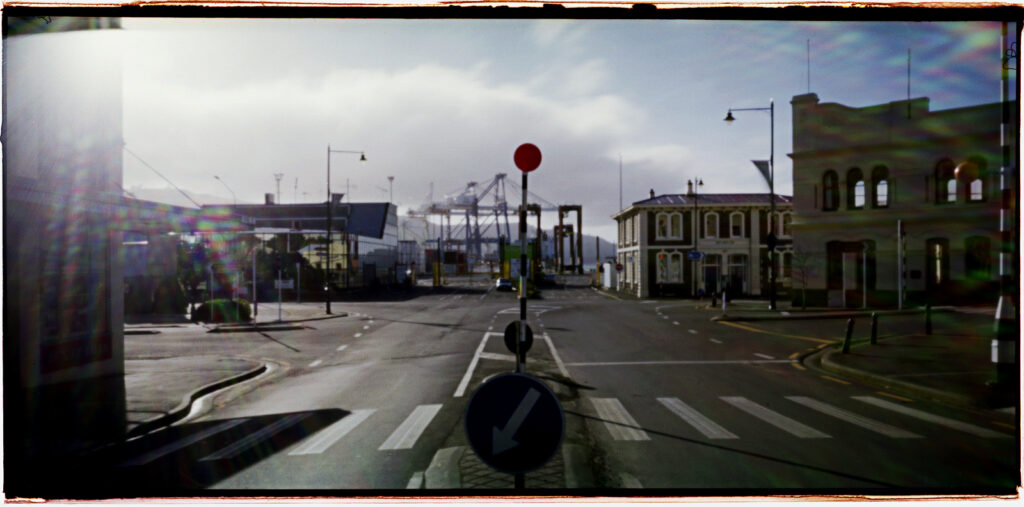
The pinhole panel I made for it adds a further layer of character to the images produced.
Composing for Wide format
In the way that twin lens and single lens 6×6 reflexes impose a way of “seeing”, the wide formats do this also. The proportions are so relatively extreme, it is essential to really consider the whole image at the time of exposure. The images produced gain much of their character from the coverage the format provides so that cropping the image seems to defeat the object and wastes film into the bargain. I generally try to use the whole of the negative with no cropping unless there is a need to correct verticals in an architectural subject or trim out vignetting for instance.
Chatting to an early exponent of the Hasselblad Xpan a while back at a photographic convention, I asked why he always composed horizontally and never vertically. Basically he didn’t think he should, believing the camera was only designed for landscape format.
I disagree with that rather narrow view. For me, the wide format will sometimes lend itself to predominantly vertical subjects very effectively in addition to the more traditional landscape images. Very often the essential character of an image is dictated by the shape of the main subject but I confess, mostly landscape.
Examples
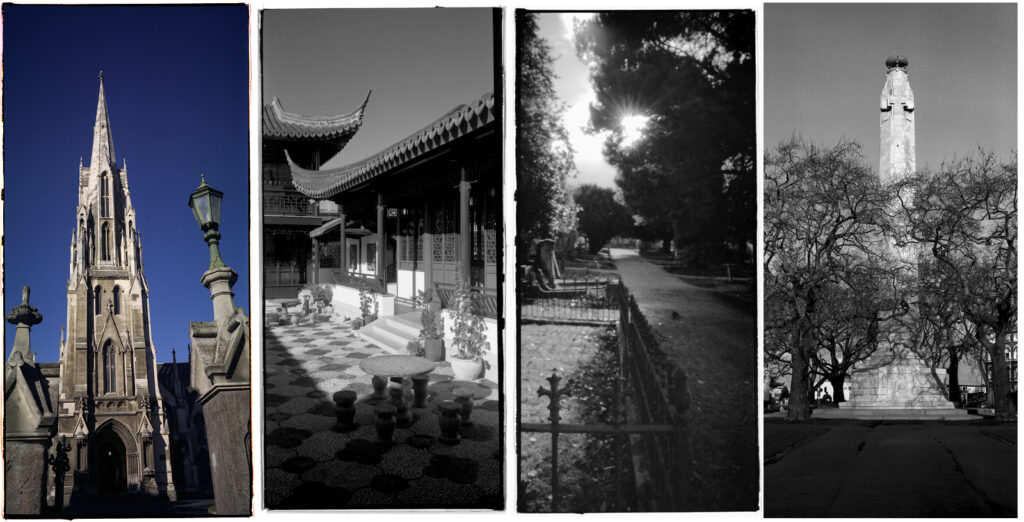
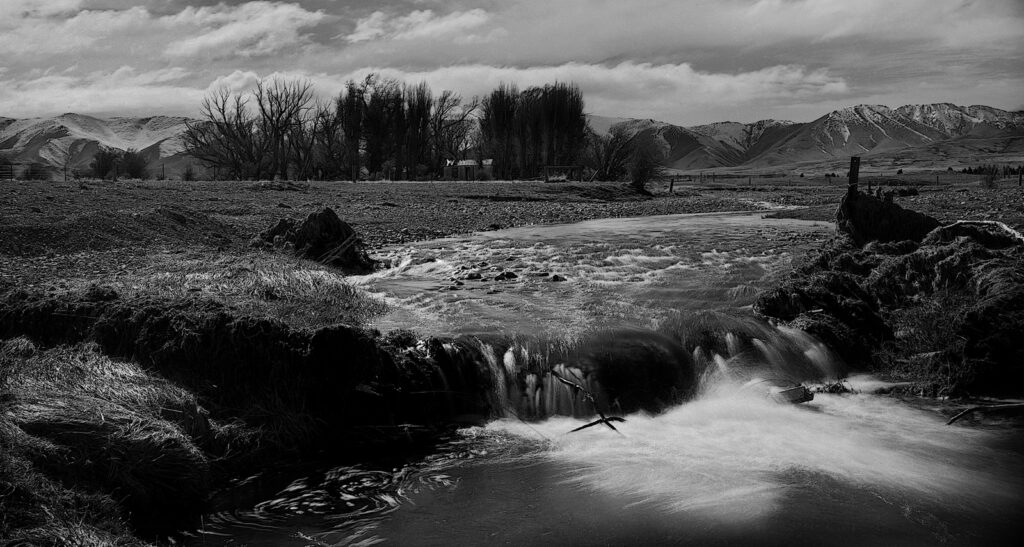
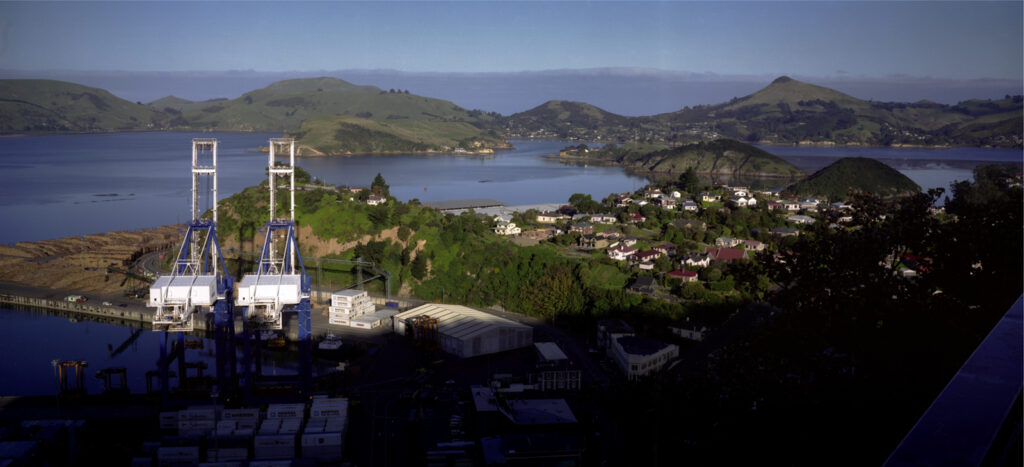
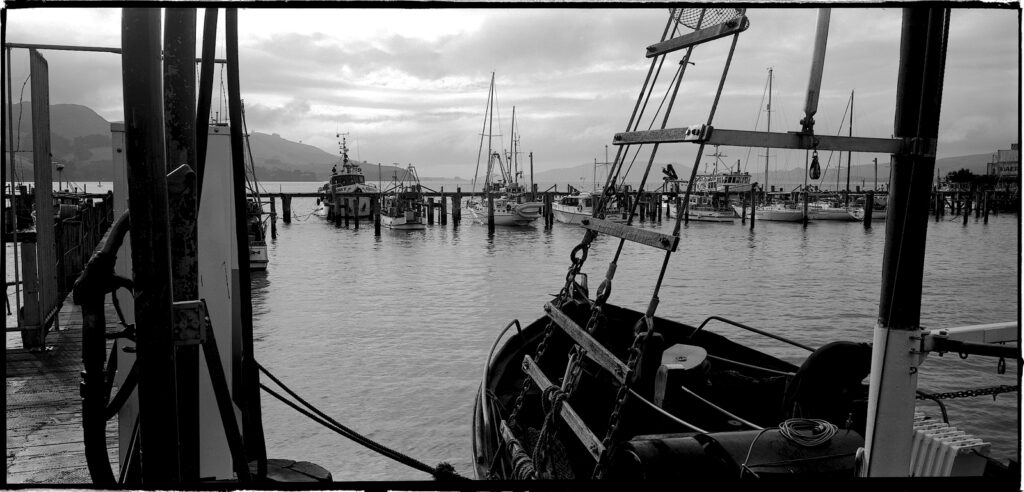
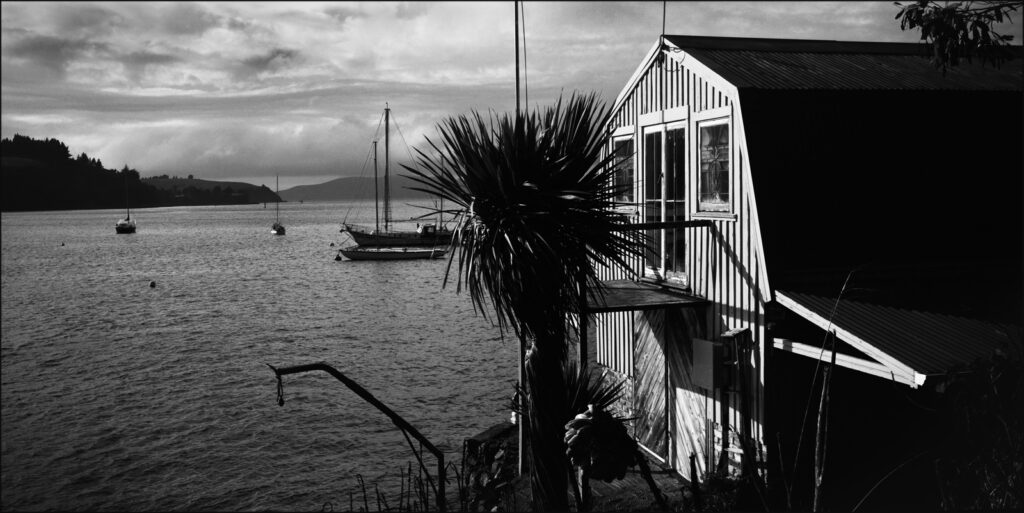
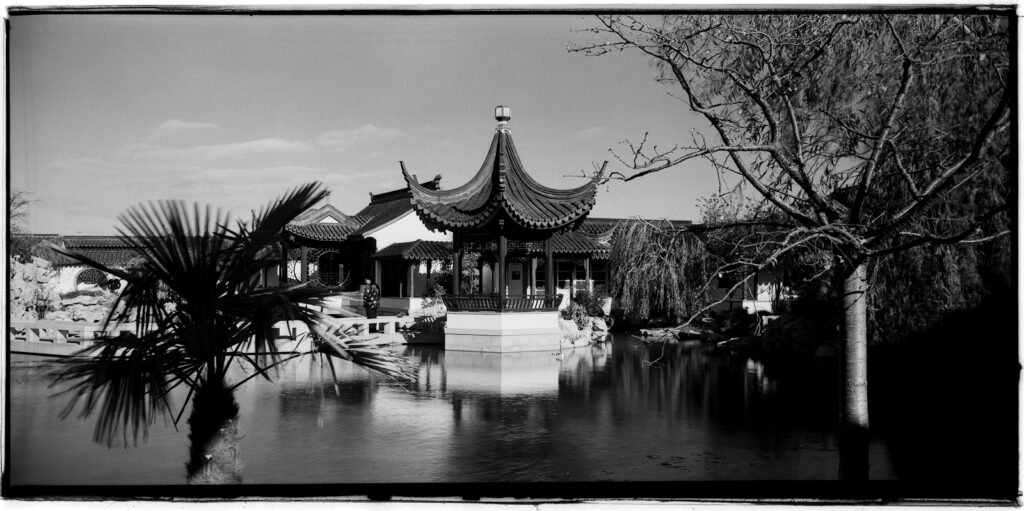
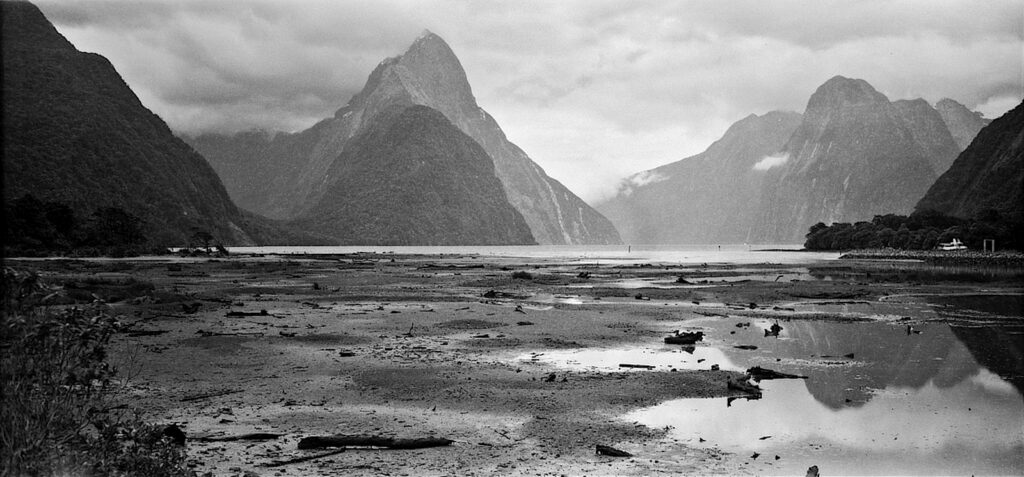
In conclusion.
I have used the camera on various subjects using mostly 120 size FP4+ monochrome film, processed in Rodinal 1:25 or 1:50 with agitation or 1:100 stand processed, and Fuji Reala colour negative film, trade processed, used for the images above. I think using a camera like this takes you out of your comfort zone. Not only does it force a slower pace on your photography but also imposes a discipline on composition which will often lead to improvements in results.
Share this post:

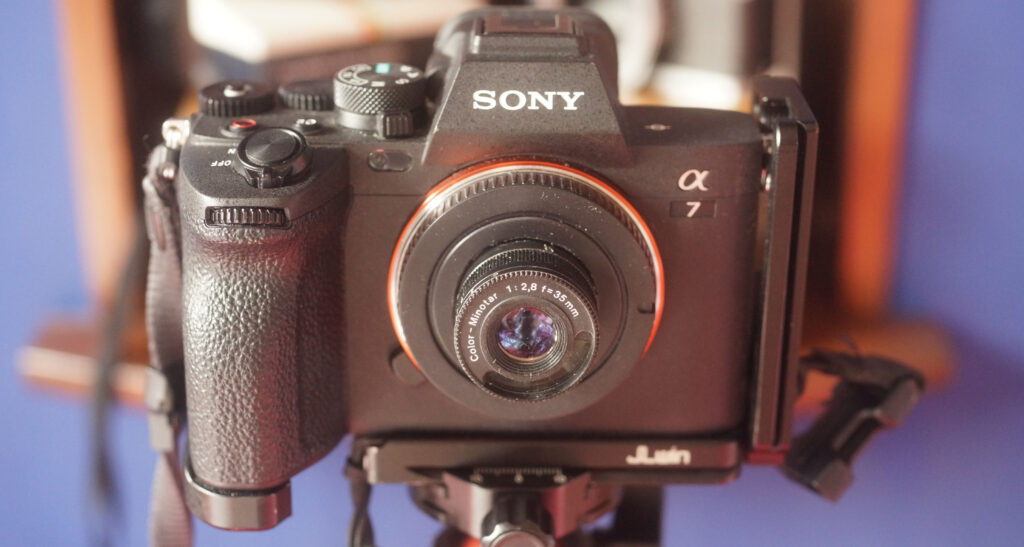

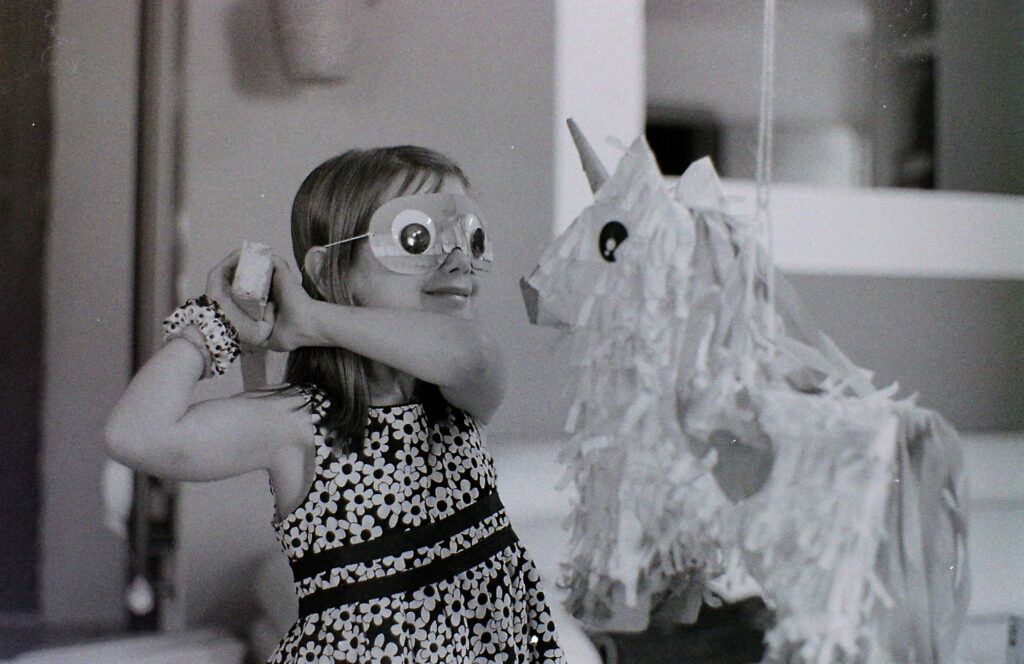
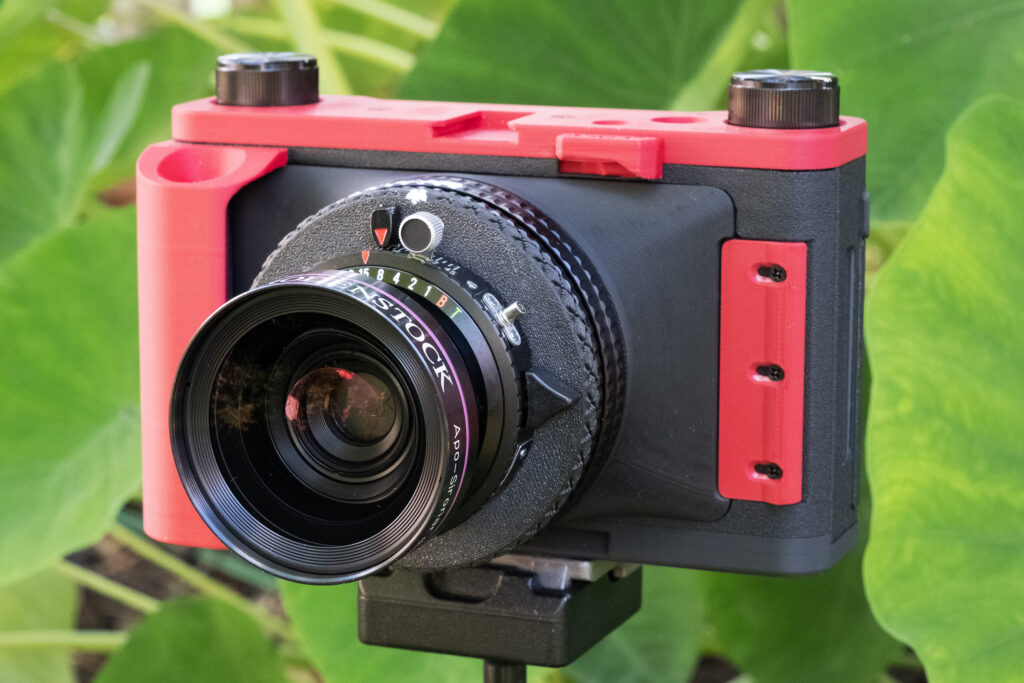




Comments
Charles Higham on My Homemade 6×12 Format Camera.
Comment posted: 03/06/2024
Comment posted: 03/06/2024
Gary Smith on My Homemade 6×12 Format Camera.
Comment posted: 03/06/2024
Thanks for sharing, Tony!
Comment posted: 03/06/2024
Daniel Emerson on My Homemade 6×12 Format Camera.
Comment posted: 03/06/2024
Appreciate the additional narrative on your camera development and your collection of additional stunning shots. I continually updated my favorite throughout the read until I gave up. You demonstrate panorama to terrific effect from dynamics in people groups to boat scenes to landscapes. This is a post that I will return to for the sheer pleasure of enjoying the photos.
Regards
Daniel
Comment posted: 03/06/2024
Jeffery Luhn on My Homemade 6×12 Format Camera.
Comment posted: 03/06/2024
Thank you for posting more narrative and the beautiful NZ shots! Your quality and composition is terrific. I have a baby Graphic with that lens, but I think I'm going to buy a Super Angulon 65 and make a fixed focus cigar box 4x5 or 5x7 camera. You have inspired us all!!! Question: Did you consider having the film plane a bit curved? Should I?
Comment posted: 03/06/2024
Geoff Chaplin on My Homemade 6×12 Format Camera.
Comment posted: 04/06/2024
Comment posted: 04/06/2024
Alexander Seidler on My Homemade 6×12 Format Camera.
Comment posted: 04/06/2024
Comment posted: 04/06/2024
Ibraar Hussain on My Homemade 6×12 Format Camera.
Comment posted: 04/06/2024
The ingenuity and dedication
Topped off with lovely photography - perfect!
Thanks again my friend for your inspirational post
Comment posted: 04/06/2024
Simon Foale on My Homemade 6×12 Format Camera.
Comment posted: 04/06/2024
Comment posted: 04/06/2024
Eric on My Homemade 6×12 Format Camera.
Comment posted: 04/06/2024
Comment posted: 04/06/2024
Roger on My Homemade 6×12 Format Camera.
Comment posted: 05/06/2024
Comment posted: 05/06/2024
Steviemac on My Homemade 6×12 Format Camera.
Comment posted: 07/06/2024
Comment posted: 07/06/2024
Comment posted: 07/06/2024
Comment posted: 07/06/2024